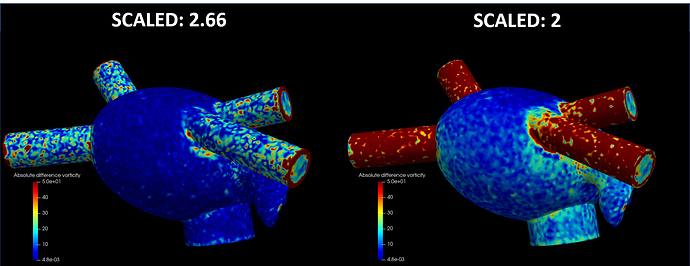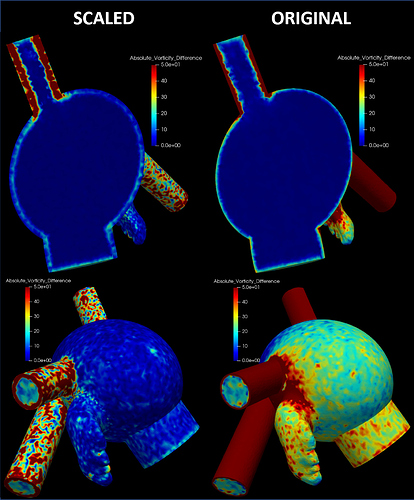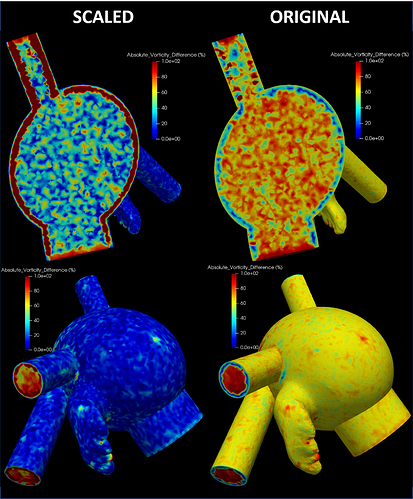First of all, I wanted to thank you all for participating in the discussion. I generated some visualizations following some of the advice given on the replies above. As suggested by Miguel I extracted the surface and multiplied the Paraview obtained vorticity by a factor of 2. As you can see in the image, in my case the optimum scaling factor is around 2.66 (I’ve only adjusted it visually).
Next, I wanted to test if it is true that the vorticity just differs on the surface, since Paraview doesn’t account for non-slip condition (Since my data is coming from a Fluent simulation where the non-slip condition was fullfilled I don’t know if this matters in Paraview, v=0 in the surface of the structure). So I basically calculated the absolute difference between the magnitude of the Ansys and Paraview obtained vorticity and performed a Clip. In the image below I compared side by side the original and scaled data (the same 2.66 factor from above). I applied the scaling to the whole volume to observe if it somehow improved over the original.
Nevertheless, I thought that this visualization could be misleading since the range of the vorticity is quite high ([0,560] for the vorticity magnitude from Ansys), meaning that in areas of high vorticity it is highly probable that the difference is going to be higher. To solve this I divided the absolute vorticity difference in each point by the Ansys vorticity magnitude and multiply it by 100 to obtain a percentage of the error respect to the FEM solver. I attach the image below. I don’t venture to interpret the images, since my approach could be wrong, but to me it seems that the difference in the bulk is also reduced when scaling it, and that would not correspond to just an error on the surface.


